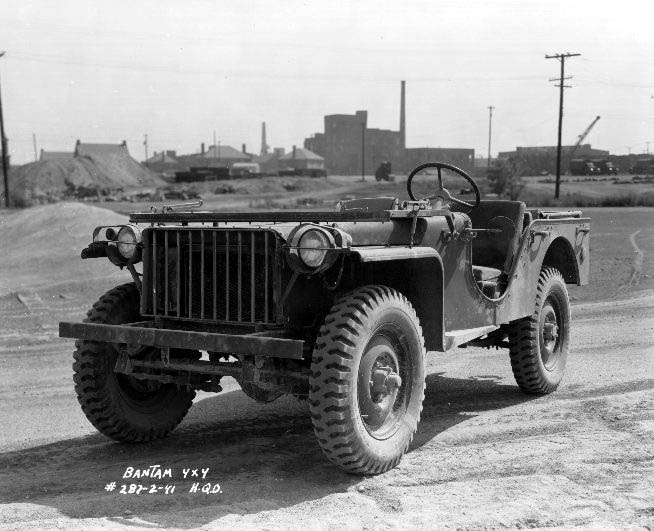
Friends,
As you may know, the Mighty Jeepster is fast approaching her fourth decade trundling over this great land, and for the most part the old girl’s held up well. Some of the design decisions made by Kaiser Jeep Corporation and later American Motors have proved to be flawed, like turning the edges of fenders up to catch the most water and snow, directly stamping some body panels from sheets of rust, and eschewing central fuse boxes in favor of tangled bundles of wire made accessible by reaching past sharp metal edges and self-tapping screws; but on the whole the Jeepster is a brilliant, if impractical, mode of transportation. On a personal note, yes, I have had a tetanus shot lately.
Another bad idea manifesting its flaws over the last few months, though, has been the way they decided to channel the force exerted by your left foot into decoupling the engine from the transmission. As far as clutch linkages go, the solid metal rods were a huge improvement over the seizure-prone cable used previously, but this improvement only counts in the vacuum that Jeep engineers seemed to live in at the time as everyone else had moved to hydraulic clutch actuation by then.
In the world of today, a mechanical clutch linkage is archaic, almost quaint. A near-as-dammit direct connection between you and the drivetrain, without any pesky fluid (or cables) to dampen the feeling of control. Unless it breaks.
Which is exactly what happened.
Actually, it’s been a problem for years. The previous owner, who happens to have been the singular Stinko himself, and I have both enjoyed pulling over on busy highways to retrieve bits of linkage that had fallen off of the car. We’ve thrilled oncoming drivers by darting in front of them to recover one irreplaceable and indispensable bit of automotive arcana or another from the street after one highly worn ball had separated from its ill-fitting socket. The final insult came two weeks ago, during a prayer service I was holding to encourage the Jeepster’s safe exit from the steep slope of my upper driveway, the clutch pedal flopped to the floor. We’ve been through this before, but as I inspected the rods laying on the ground, I noticed that the connecting sockets had shattered, leaving nothing more than dimples where deep holes had been decades ago. These pieces were done.
What to do? I could just replace all the metal articulating parts with modern reproductions made in China out of soap and particleboard. I could retrofit pieces of hydraulic clutch from a more current Jeep, or even from a Datsun B210, but that means cutting big holes in the firewall, which I oppose since it’s easy to assume that the firewall is the only thing holding the body together. I could try one of the many aftermarket “better ideas” including chain drives or electric solenoids. Fitting these would require a fairly large checkbook in addition to my faith that gentlemen named Buckshot and Big Al have thought through all of the engineering problems that might arise. Instead, the obvious choice was a near replacement with modern, proven parts and technology that didn’t cost too much more than Chinese soap.
This story doesn’t really become interesting, to be honest. Nobody (and I mean nobody) makes aftermarket upgrade parts specifically for the Jeepster, so you hope that CJ-5, 6, 7, or Wagoneer parts will work. The parts I ordered are certainly an upgrade, but as shipped, was half a foot too long. And also too short. And too stiff. And the wrong angle.
So I fixed it.
I can’t quite pinpoint it, but there’s something very relaxing about discovering a solution to a problem and resolving that problem and I would’ve enjoyed it a lot more if resolving this problem didn’t involve laying on my back in the wet, heavy, leftover snow from a couple weeks ago. Modifications made, fine tuning complete, I set off on a test drive that went just a few more blocks, and a few more, because it was such a joy. Again, it’s a terrible car with a horrid driving experience that will terrify the weak-willed (or those tepid souls who must have some manner of directional control, shock absorption, climate control or safety belts draped over their narrow shoulders), but once it was back on the road is was the finest motorcar ever produced. And I, the most discriminating motoring aficionado, was able to take in the ambience of piloting this triumph of technology as I headed downtown to pick up my celebratory pizza.
Your pal,
– bob
 That’s Exciting!
That’s Exciting!


















